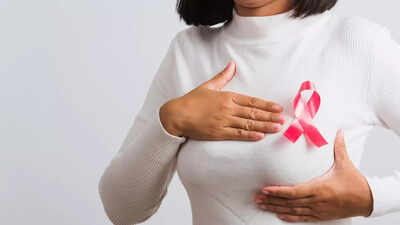ARTICLE AD BOX

Staying in touch with your breast health is an effective move in self-care, enabling you to be at a position to detect and react to even minute changes. Self-examining your breasts is not simply about routine, it is about developing a strong acquaintance with the appearance and feel of your breasts.
It will help you understand what is normal and what is abnormal, to you. Most changes are not indicators of cancer but it is better to remain alert and take early action..Start With Being Aware Not AnxiousFear will never help you understand your breasts, it is awareness that will. One should also make daily habits of checking up on themselves. It should be about observing what is normal to your breasts and not panic about normal differences that may occur over time.
Once you are sensitive to the appearance and feel of your breast tissue, you are sure that you know when something has changed. It may be easy to panic about every lump or change but it is important to bear in mind that breast tissue may be bumpy, lumpy, or uneven in nature.
Look in the Mirror--Behold with the EyeA complete self-examination starts with a visual examination. Stand in front of the mirror with your shirt and bra removed and position your arms on your side.
Then visually inspect both breasts. Note any changes in size, shape or symmetry. Pay attention to the nipple area for changes such as inversion, scaling, or other abnormalities. Next, raise the arms above the head, pressing the hands over the hips and notice again; these will assist in revealing concealed changes in the contours making it easier to detect any abnormalities on both breasts.
It is important to remember that the breast of two is never perfectly symmetrical, focus on recognizing what’s normal for youFeel for Changes - In the Shower or StandingOnce you carefully examine your breasts visually, use the fingers to physically examine your breasts for any changes from armpits to collarbone.
The pads of your three middle fingers best feel the various layers of tissue with firm and soft pressure.This is simplest for many ladies to accomplish in the shower since soap makes it easier for the fingers to move over the skin. Move at your pace and be methodical with your touch to a level that you recognize any lumps, thickenings or tenderness.
Look for anything new, a hardened knot, sore spot or thickening and remember the upper outer quadrant, where the breast tissue is stretched out to the armpit.Try the Lying Down ExamA lying down would be followed by an examination in order to spread up the tissues along the chest wall to enable easier exploration. Keep a pillow behind your shoulder, and put your right arm behind your head, and the other hand circle round each breast following circular movements. Again, change your pressure to test all the levels of tissue. Also, remember to squeeze each of the nipples softly to examine the abnormal discharge.
Follow a Pattern—Don’t Miss a SpotEstablish a routine of self-evaluation since regularity is crucial. You can think of your breast as a clock face and cut it out in a spiral starting at the nipple. It's important to take your time and examine every area, including the area beneath the arm where the breast tissue's tail typically rests. By following the same process each time, you will become thorough and able to identify any variations from month to month.Most Change are Not CancerLumps or abnormalities are natural to find, though the majority of them are not cancerous. Any consistent changes that you observe, particularly a new lump, pain, thickening, or skin irritation, it is important to seek the attention of your medical professional rather than making any assumptions independently. Other warning signs may be the nipple inversion, discharge that cannot be explained, or breast or underarm change that may be sudden.
It is always a good thing to do it early enough before it is too late.Remember, breast self-exam is not a replacement for professional examination and regular mammograms, it is only a good method to know your own body. Never miss a screening appointment with your health care provider and use any results of your self-exam to guide, but not to dictate.In case you suspect anything suspicious, you should not hesitate to contact your healthcare provider. Medical workers are present to assess whether or not additional examinations are necessary such as ultrasounds or mammograms. This early detection helps to get valuable information and be guaranteed a helping hand. The most effective way of ensuring that you have lifelong breast health is by listening to your body, being observant and asking questions.(Dr Anupama Gangwal – Senior Consultant, Obstetrics & Gynecology, Cocoon Hospital, Jaipur)

 2 hours ago
4
2 hours ago
4








 English (US) ·
English (US) ·